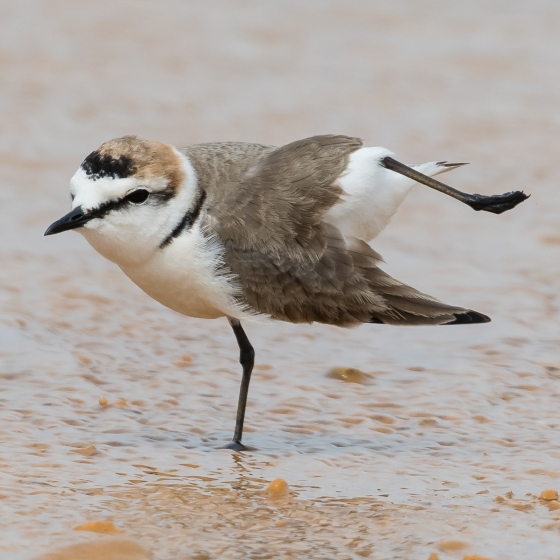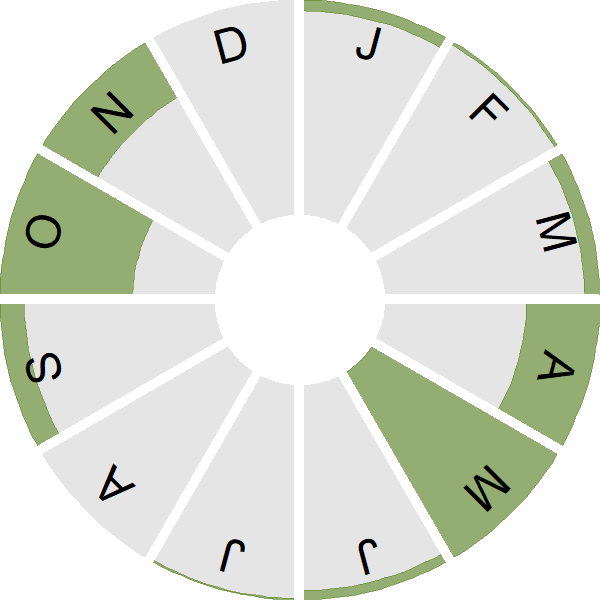Kentish Plover

Introduction
A former breeder in southern England, hence the name, the Kentish Plover is now a scarce but annual visitor from Europe.

Key Stats
Status and Trends
Conservation Status
Population Size
Population Change
Population trends of this scarce species are not routinely monitored.
Distribution
This species is a rare vagrant and was recorded during Bird Atlas 2007–11 as shown on the map.
Occupied 10-km squares in UK
or view it on Bird Atlas Mapstore.
or view it on Bird Atlas Mapstore.
European Distribution Map
Distribution Change
This vagrant has been recorded in several atlases so we have been able to map distribution changes. However, as a rarity these may not show a consistent pattern of change.
Change in occupied 10-km squares in the UK
or view it on Bird Atlas Mapstore.
or view it on Bird Atlas Mapstore.
Seasonality
Kentish Plover is a rare vagrant in spring, autumn and winter.
Weekly pattern of occurrence
The graph shows when the species is present in the UK, with taller bars indicating a higher likelihood of encountering the species in appropriate regions and habitats.

Movement
Britain & Ireland movement
Foreign locations of birds ringed or recovered in Britain & Ireland
Dots show the foreign destinations of birds ringed in Britain & Ireland, and the origins of birds ringed overseas that were subsequently recaptured, resighted or found dead in Britain & Ireland. Dot colours indicate the time of year that the species was present at the location.
- Winter (Nov-Feb)
- Spring (Mar-Apr)
- Summer (May-Jul)
- Autumn (Aug-Oct)

European movements
EuroBirdPortal uses birdwatcher's records, such as those logged in BirdTrack to map the flows of birds as they arrive and depart Europe. See maps for this species here.
The Eurasian-African Migration Atlas shows movements of individual birds ringed or recovered in Europe. See maps for this species here.
Biology
Survival and Longevity
Survival is shown as the proportion of birds surviving from one year to the next and is derived from bird ringing data. It can also be used to estimate how long birds typically live.
View number ringed each year in the Online Ringing Report.
Classification, names and codes
Classification and Codes
- Order: Charadriiformes
- Family: Charadriidae
- Scientific name: Anarhynchus alexandrinus
- Authority: Linnaeus, 1758
- BTO 2-letter code: KP
- BTO 5-letter code: KENPL
- Euring code number: 4770
Alternate species names
- Catalan: corriol camanegre
- Czech: kulík morský
- Danish: Hvidbrystet Præstekrave
- Dutch: Strandplevier
- Estonian: mustjalg-tüll e. meritüll
- Finnish: mustajalkatylli
- French: Pluvier à collier interrompu
- German: Seeregenpfeifer
- Hungarian: széki lile
- Icelandic: Strandlóa
- Irish: Feadóigín Chosdubh
- Italian: Fratino
- Latvian: juras tartinš
- Lithuanian: juodakojis kirlikas
- Norwegian: Hvitbrystlo
- Polish: sieweczka morska
- Portuguese: borrelho-de-coleira-interrompida
- Slovak: kulík morský
- Slovenian: beloceli deževnik
- Spanish: Chorlitejo patinegro
- Swedish: svartbent strandpipare
- Welsh: Cwtiad Caint

